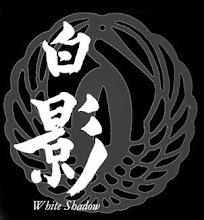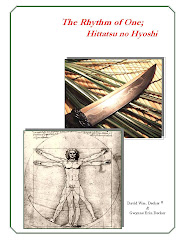
Chisel Tips
One of my favorite old-wives tales is that during WW-II men who were issued commando knives purposely broke off the needle-like tips. This was done to prevent the knife from lodging in bone and getting stuck during a thrust, so one story goes. The other tale is this modification was to prevent the accidental bending or breaking of the tip which would make the knife useless. I have owned two WW-II knives that had the tips broken and sharpened across the blade, not re-pointed. Unfortunately I re-pointed them using a whetstone. Over a period of time I wondered why they did not reshape the point to return the knife more to its original look. This, coupled with the purchase of a Razel, made me wonder if those soldiers knew something about stabbing and cutting that I did not. I asked my good friends Brent Sandow and Peter Parkinson, both of Auckland, NZ, to build me a "chisel-tip" version of the Fairbairn Sykes commando knife. Due to a misunderstanding I ended up with two different blade profiles. One is the standard double bevel with four flats (knife on right). The other knife has a yari-ground blade with t
 hree flats (knife on left).
hree flats (knife on left).I asked Peter to build me a "mule", a bare bones test knife. What I received were two fully finished knives in tactical black. These are beautiful knives, ser. number 002 and 002A. When I showed them to Gwynne she said with a smile, "Looks like two broken knives to me." My test medium for the stabbing test was a stack of clean corrugated cardboard. I had no idea how far the knives would penetrate so I stacked the cardboard about 9 inches deep. I did not contrive any sophisticated machine to apply an even force so the results may not be accurate to the mm but they repeated in kind, from knife to knife. Using old fashioned arm-power I tried to drive the knives into the stack with equal force, pretty much as hard as I possibly could. I performed the tests three times and averaged the results. The mil-spec coating showed no signs of damage or scuffing.
As a control, and for comparison, I also tested a new Linder 3rd Pattern knife to represent a modern factory-made adaptation of the F/S.
Here are the final results from the stabbing tests performed on the stack of corrugated cardboard with four different knives.

Linder 3rd pattern style with 3mm blade avg. 81mm
Parkinson 1st Pattern style with 6mm yari style chisel tip 81mm
Parkinson 1st Pattern style with 6mm double ground chisel tip 65mm
Parkinson damascus 1st Pattern with 6mm double ground std tip 60mm
Knives in photos
Damascus knife far left, Linder, Yari, Std chisel tip
I was surprised at the difference in penetration between the Parkinson yari ground vs double ground blade. The yari-ground blade penetrated the deepest and was also the best cutting blade despite the very steep bevels. The Linder blade being only 3mm thick, versus 6mm for the Parkinson knives, pretty much insured it would cut better. I also expected it to out-penetrate all of the Parkinson knives. As you can see it was matched by the yari blade.
My standard test cutting medium, pool noodles, was used for the cutting part of the experiment. The biggest variable in the cutting tests, with the Parkinson knives, was not blade style or thickness but sharpness. The sharpness of the Parkinson knives varied from blade to blade and edge to edge. I suppose this is due to them being hand ground. I should have checked the edges before test cutting but my primary concern was penetration. Keep in mind that William Fairbairn originally designed these knives with penetration in mind not fileting fish. As an additional side note I would mention that out of over 100 original WW-II F/S fighting knives that I own, less that 10% were sharpened at all!
Conclusions: The thinner blade on the Linder will definitely take a finer edge, as would any thin bladed knife. I did not try it, but I expect that test results of an HG Long or a J Nowill and Sons F/S would be comparable to the Parkinson knives without the blade strength and elegance of a Parkinson knife. Perhaps at a later date I can test a broader range of manufacturer’s products. In fact I have two of the new Solingen-made F/S on order right now. Once they come maybe I will expand on my tests.
I would not want to trust my life to a 3mm thick blade in combat no matter how good it cuts! Next test I will spend a little more time sharpening the Parkinson knives. Did I learn anything useful? There is another Yari-ground, chisel-tipped, 1st pattern on order from Peter and Brent right now. I am convinced they are beneficial improvements to one of the world’s great knife designs. With all due respect, I wonder what W.E. Fairbairn would think?






No comments:
Post a Comment